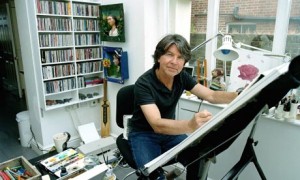Recently, I was emailed this fascinating story and while I advocate teaching our children through the arts, I do believe that Art must also be taught for Art’s sake. The alarm bells are ringing:
Why do so many people say: ‘I can’t draw’?
The answer may lie in schools, says the children’s laureate Anthony Browne
Tuesday June 30 2009 The Guardian

On a recent school visit I was greeted by a teacher who proudly informed me that the children at this particular school were two years further ahead in their reading compared with those in other schools. I was impressed.Then I began talking to various classes.
All children seem to love playing this game, and they’re very good at it – much better than most adults. Although on one level it’s just a game, I believe that it encapsulates the act of creation. Every time we paint a picture, write a story or compose a piece of music, we are, in effect, playing the shape game. Everything comes from something else, inspiration is everywhere.
I showed the same children images from my books, demonstrating how I’ve played the shape game in every book I’ve ever made. But again I noticed a difference from other schools I’d visited – no one recognised the Mona Lisa. I was amazed, and later in the day as I left the school, I looked at the artwork displayed on the walls. Every piece of art was related to another subject: history, geography or science. Art for art’s sake was nowhere to be seen.Of course, this school isn’t typical of the ones I’ve visited, but it does seem to sound warning bells. The evidence of a lack of visual creativity in schools is a danger that we ignore at our peril.
Most adults will tell me: “I can’t draw!” Children, too, as they get older, say the same thing. Something happens to our creativity as we go through the education process; most of us lose touch with it. A stifling
form of self-consciousness invades us, whether it be in drawing, writing, singing or (in my case) dancing.When I talk to children, I show them a typical drawing I made when I was six and point out to them that when I was their age I didn’t draw any better than any of them. All children can draw because they instinctively know that drawing isn’t about reproducing a careful, photographic version of an object or a scene. Drawing is about communication, and the shape game is a perfect example of this. It makes us look, and use our visual imagination.
http://www.guardian.co.uk/education/2009/jun/30/creativity-schools-childrens-laureate
For more information on the children’s laureate, administered by Booktrust, please see www.childrenslaureate.org.uk Is your school doing exciting, creative things? We want to hear about it. Education Guardian’s Creative Summer project aims to show what schools re doing to brighten the curriculum. Send your pictures, poems, videos and schemes to us at creativityintheclassroom@guardian.co.uk Copyright Guardian Newspapers Limited 2009